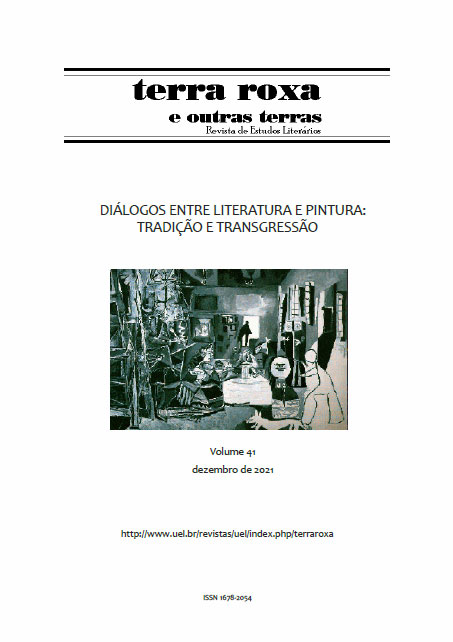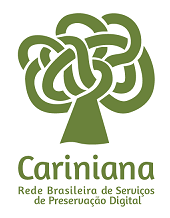The picturesque horror in The surgeon of the sea, by Gabriele D'annunzio
DOI:
https://doi.org/10.5433/1678-2054.2021v41p22Keywords:
Gabriele D'Annunzio, Hypotyposis, Ekphrasis, HorrorAbstract
Despite the contributions of Gabriele D'Annunzio (1863-1938) to the decadent movement, the author served throughout the 1980s as a great short story writer and journalist, with strong inspiration in the Italian verismo and in French naturalism. These inspirations made D'Annunzio develop what we will call pre-decadentism: narratives about a portion of the population mistreated by society. Trying to give veracity to his stories, the writer adopts, in addition to the zolian technique of direct observation, a very particular aesthetic that comes up against the definition of horror, since themes such as the grotesque, the mortuary and the sick are frequently approached to illustrate the suffering of your characters. The result of this is that, even before adopting a decadentist aesthetic based on ekphrasis - descriptions of works of art - and hypotyposis - pictorial descriptions without reference to a specific picture -, the author used these resources to enrich his naturalist tales; a horror of colors and textures so intense that it evolves into the picturesque. This article aims to analyze the Mare tenebrarum (Bachelard 2015) from the perspective of an aesthetic of horror (Lovecraft 1987; Todorov 1975) and the pictorial language (Louvel 2012) in the work The surgeon of the sea (1886).
Downloads
References
BURKE, Edmund. Uma investigação filosófica sobre a origem de nossas ideias do sublime. Trad. Enid Abreu Dobranzky. Campinas: UNICAMP, 2013.
CIRCEO, Ermanno. Caratteri e limiti del verismo dannunziano. Atti del I Convegno internazionale di studi dannunziani - D'Annunzio giovane e il verismo. Pescara, 1976. 177-182.
D'ANNUNZIO. Novelas da Pescara. Trad. Eugênio Vinci de Moraes. São Paulo: Berlendis & Vertecchia, 2007.
D'ANNUNZIO. Tutte le novelle. Milano: Arnoldo Mondadori, 2006.
ECO, Umberto. Storia della bruttezza. Roma: Bompiani, 2007.
FONTANIER, Pierre. Les Figures du discours. Paris: Flammarion, 1968.
GIBELLINI, Pietro. Per un diagramma del verismo dannunziano. Atti del I Convegno internazionale di studi dannunziani - D'Annunzio giovane e il verismo. Pescara, 1976. 25-41.
KANT, Immanuel. Crítica da faculdade de julgar. Trad. Fernando Costa Mattos. Rio de Janeiro: Vozes, 2016.
LOUVEL, Liliane. Nuanças do pictural. Thaïs Flores Nogueira Duniz, org. Intermidialidade e Estudos interartes: desafios da arte contemporânea. Trad. Márcia Arbex. Belo Horizonte: Editora UFMG, 2012. 47-69.
LOVECRAFT, Howard Phillips. O horror sobrenatural na literature. Rio de Janeiro: Exilado dos livros, 1987.
MAUPASSANT, Guy de. 125 contos de Guy de Maupassant. São Paulo: Companhia das Letras, 2009.
TODOROV, Tzvetan. Introdução à literatura fantástica. Trad. Silvia Delpy. São Paulo: Perspectiva, 1975.
YACOBI, Tamar. Pictorial Models and Narrative Ekphrasis. Poetics Today, Durham, v. 16, n. 4, p. 599-649, 1995.
Downloads
Published
How to Cite
Issue
Section
License
Copyright (c) 2022 Terra Roxa e outras Terras

This work is licensed under a Creative Commons Attribution 4.0 International License.
Authors who publish in this journal agree to the following terms:
a) The authors retain the copyright and grant the journal the right of first publication, the work being simultaneously licensed under the Creative Commons Attribution-NonCommercial 4.0 International License, allowing the sharing of the work with acknowledgment of the authorship of the work and initial publication in this journal.
b) Authors are authorized to assume additional contracts separately, for non-exclusive distribution of the version of the work published in this journal (eg, publish in an institutional repository or as a book chapter), with acknowledgment of authorship and initial publication in this journal.
c) Authors are allowed and encouraged to publish and distribute their work online (e.g. in institutional repositories or on their personal page) after the editorial process, as this can generate productive changes as well as increase impact and citation of the published work (See The Effect of Open Access).
d) The authors of the approved works authorize the journal to, after publication, transfer their content for reproduction in content indexers, virtual libraries and the like.
e) The authors assume that the texts submitted for publication are of their original creation, taking full responsibility for their content in case of any objection by third parties.




















